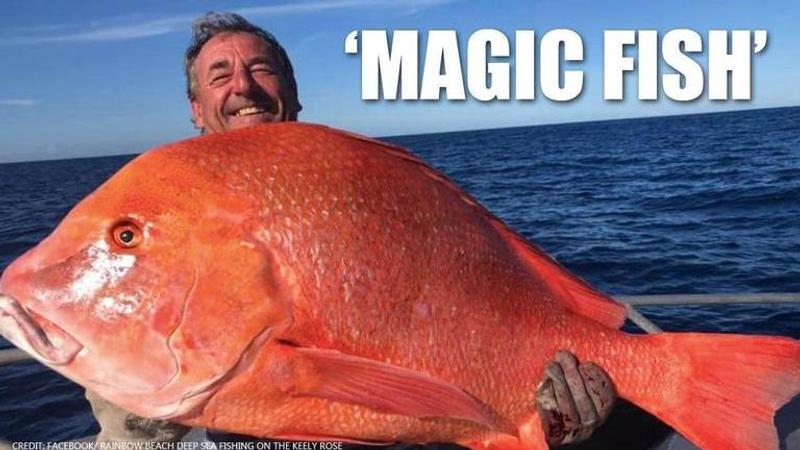Published 12:30 IST, June 27th 2020
Australia: Fisherman catches giant 22kg fish, says will 'donate it to science'
Ed Falconer, a fisherman in Australia and a charter operator, caught the gigantic creature weighing 22 kg and 104 cms at Rainbow Beach in Queensland this week.

In his 'once in a lifetime' catch, a fisherman in Australia struggled 20 minutes on his rod and reel and caught a unique giant redfish which he later found was a 22kg red emperor. Ed Falconer, a charter operator, caught the creature at Rainbow Beach in Queensland this week. Shared on Facebook by Rainbow Beach Deep Sea Fishing on the Keely Rose the post has garnered an immense reaction as people congratulated Ed for his “amazing catch”. However, the man would be donating the fish to science for research instead of consumption, according to reports.
Speaking about how he managed to get the gigantic fish on the deck, Ed reportedly said, the fish felt so heavy on the boat that he had instantly realized that it wasn’t an ordinary catch. Further, upon measuring the crew found that the huge mammal measured in at 104 centimeters long. He added, he apparently thought it was a big cod instead of a red emperor with the way it was fighting. The heaviest fish he had ever caught weighed about 19kg, and he had been fishing for 30 years, Ed was quoted saying. Calling his catch “a once-in-a-lifetime thing”, Ed was quoted as saying that he had caught creatures often 8kg, 10kg, 12k but this particular fish was the first time and he was astonished to see it.
Red emperor's weight 'extremely noteworthy'
While Ed has reportedly donated the fish to Queensland Fisheries, the scientists aim to discover via research how the fish survived for so long. Ed had earlier said that he thought it was the big cod instead of a red emperor, the way it was fighting, as per a report. A fish expert from Queensland Museum, Jeff Johnson, reportedly said that the weight of the red emperor is 'extremely noteworthy', adding, that the fish's weight matched that of one who was recorded in a book published in 1962. Further, he added, it was an extremely noteworthy capture and a dream of any fisherman. Queensland Fisheries study certain species and are always on the lookout. They would certainly be interested in trying to determine how old that fish was, he was quoted saying. Scientists would count the calcified rings in the fish’s skull by removing a bone, Jeff said.
Updated 12:30 IST, June 27th 2020






